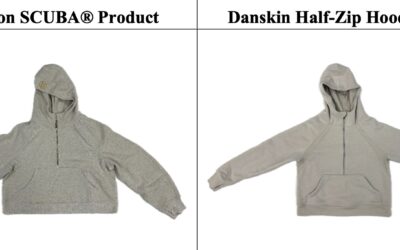Federal Circuit oral arguments could reshape patent continuation strategy after judge controversially threw out $32.5M verdict over 13-year delay.
Descriptiveness of Trademark Law
Descriptiveness is an important concept in trademark law.
As it refers to the inherent quality of a mark to describe the goods or services it represents. In general, descriptive marks are considered weak and are often denied trademark protection, as they are deemed incapable of serving as source indicators for the goods or services in question. However, there are certain circumstances in which descriptive marks can acquire distinctiveness and become eligible for trademark protection. The case law surrounding descriptiveness provides guidance on how courts determine whether a mark is descriptive and whether it has acquired secondary meaning.
One of the leading cases in trademark law related to descriptiveness
is Abercrombie & Fitch Co. v. Hunting World, Inc. (1976). In this case, the court established a spectrum of trademark distinctiveness, which includes generic marks, descriptive marks, suggestive marks, arbitrary marks, and fanciful marks. Descriptive marks fall in the middle of the spectrum and are considered weaker than suggestive, arbitrary, or fanciful marks. The court stated that a descriptive mark directly conveys information about the qualities or characteristics of the goods or services it represents.
To determine whether a mark is descriptive, courts apply the primary significance test.
According to this test, if the primary significance of a mark to the relevant public is its descriptive meaning rather than its source-identifying function, the mark is considered descriptive. This test focuses on the perception of the average consumer and whether they would immediately understand the mark to describe a feature, ingredient, quality, or characteristic of the goods or services.
In addition to the primary significance test, courts also consider the context in which the mark is used, including the industry in which the goods or services are sold. If the mark is commonly used in the industry to describe a particular characteristic or feature, it is more likely to be considered descriptive.
However, even if a mark is initially found to be descriptive, it may still be eligible for trademark protection if it has acquired distinctiveness or secondary meaning. Secondary meaning is established when the mark has become associated in the minds of consumers with a particular source of goods or services, rather than merely describing the goods or services themselves. Factors considered in determining secondary meaning include the length and manner of the mark’s use, advertising expenditures, consumer surveys, and media recognition.
The case law surrounding descriptiveness is extensive, and courts have applied these principles to various disputes. Each case is evaluated based on its specific facts and circumstances. It’s important to consult with an intellectual property attorney or refer to specific trademark cases for a more detailed understanding of descriptiveness in trademark law.
Follow Us
Contact Us

Schedule Complimentary Consultation
Latest News & Blog Posts
Lululemon vs. Costco: Athletic Wear Giant Alleges Unauthorized Product Sales
Lululemon has filed a comprehensive federal lawsuit against Costco, alleging the retail giant violated multiple...
Disney and Universal Sue AI Company Midjourney for Copyright Theft
Disney & Universal launch groundbreaking lawsuit against AI company Midjourney for copyright infringement. $20M+ case could reshape AI industry forever.



